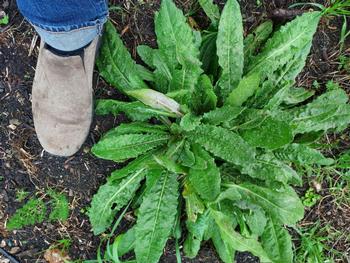The Latest Dirt - May 2023
Help Desk Answers Question About “Wild Greens”
Client’s Question:
There is an abundance of these two “wild” greens in my large garden area. I’d love to harvest them if edible, so I would like an ID and any suggestions you may offer. Thanks very much.
Susan Heckly’s reply:
Thank you for contacting the UC Master Gardener Program Help Desk. And thank you for sending good photos of the plants you need identified.

https://ipm.ucanr.edu/PMG/WEEDS/bristly_oxtongue.html
The second photo is of little mallow, also called cheeseweed because of the shape of its seed pods. These are annuals but can also live for several years. Mallows can accumulate toxic levels of nitrates from the soil. For more information see this site:
https://ipm.ucanr.edu/PMG/WEEDS/little_mallow.html

As for edibility, certainly the mallow is not edible. I cannot comment on the edibility of the bristly oxtongue because the University of California does not list that as one of its traits.
Happy gardening!
Follow up email from the client:
Thanks for the reply. I munched on some of the young, smaller, leaves. It has a nice taste, lots of fibrous texture, and the bristles were not off-putting. I steamed some of the larger leaves, and it is palatable, but not particularly pleasant in taste. I will season heavily, add garlic, onion, and vinegar to test further.
